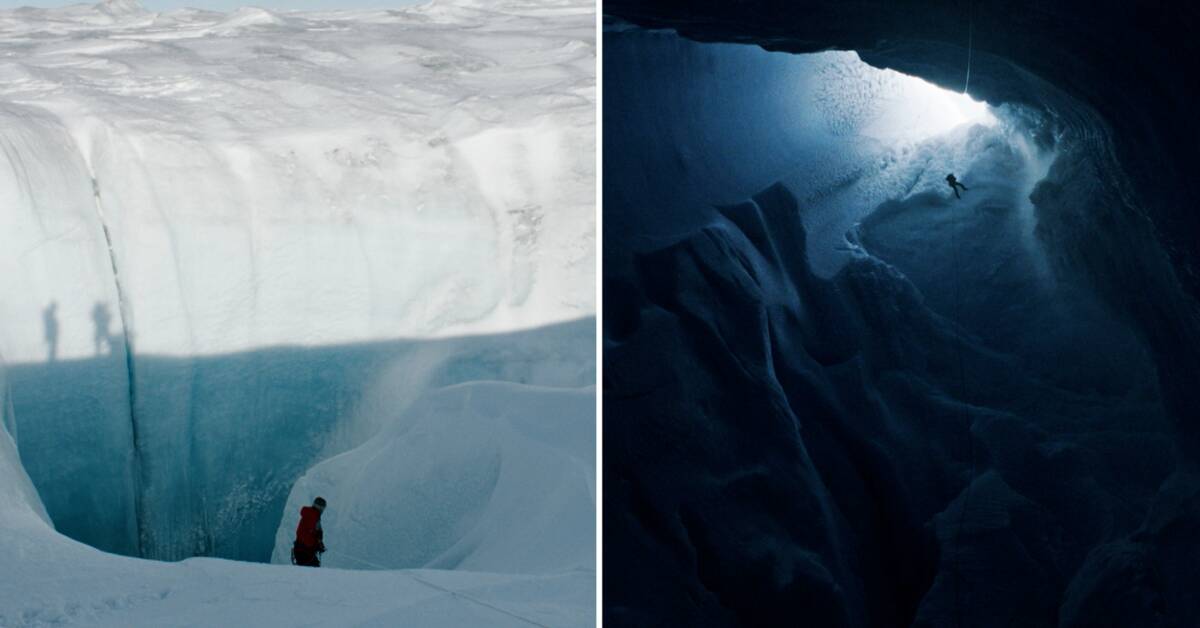It only takes a small amount of water to create a larger sinkhole that gets deeper and wider.
Finally, a so-called glacier well is formed, where meltwater finds its way down under the ice and becomes part of the glacier's drainage system, which ultimately leads the water into the sea.
The pressure under the kilometer-thick ice is great and the water at the bottom acts as a lubricant.
It makes the ice move at a higher speed;
much like an ice cube on a wet table.
The illustration shows how water finds its way down and can act as a lubricant for large masses of ice.
Photo: Torsten Høgh Rasmussen
Scientists previously believed that meltwater under glaciers drains away towards the end of summer so that it slides more slowly towards the coast.
But new measurements by Alun Hubbard's team show that there can be a lot of water under glaciers even in the winter months, which could change projections of sea level rise.
Glaciers may move faster and sea levels may rise more than previously thought, affecting billions of people in coastal communities worldwide.
See the World of Science: The Glacier from the inside on SVT Play, or on Monday 20:00 in SVT2.

